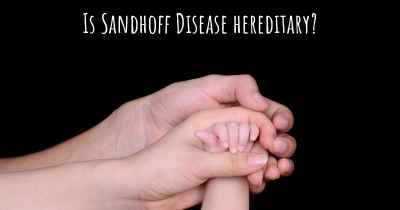Which are the causes of Sandhoff Disease?
See some of the causes of Sandhoff Disease according to people who have experience in Sandhoff Disease

Sandhoff Disease, also known as GM2 gangliosidosis type 2, is a rare and devastating genetic disorder that primarily affects the nervous system. It is an autosomal recessive disorder, meaning that both parents must carry a mutated gene for the disease to be passed on to their child. Sandhoff Disease is caused by mutations in the HEXB gene, which provides instructions for producing an enzyme called beta-hexosaminidase.
Beta-hexosaminidase is responsible for breaking down a fatty substance called GM2 ganglioside. In individuals with Sandhoff Disease, the HEXB gene mutations lead to a deficiency or complete absence of functional beta-hexosaminidase enzyme. As a result, GM2 ganglioside accumulates in the cells of the brain and spinal cord, leading to progressive damage and dysfunction.
The exact mechanisms by which the accumulation of GM2 ganglioside causes the symptoms of Sandhoff Disease are not fully understood. However, it is believed that the buildup of this substance disrupts normal cellular processes, impairs the function of nerve cells, and ultimately leads to the degeneration of the central nervous system.
There are several known causes of Sandhoff Disease:
- Genetic Mutations: Sandhoff Disease is caused by mutations in the HEXB gene. These mutations can occur spontaneously or be inherited from parents who are carriers of the mutated gene. The specific mutations determine the severity and progression of the disease.
- Autosomal Recessive Inheritance: Sandhoff Disease follows an autosomal recessive pattern of inheritance. This means that both parents must carry a copy of the mutated HEXB gene to pass it on to their child. If both parents are carriers, there is a 25% chance with each pregnancy that the child will inherit two copies of the mutated gene and develop Sandhoff Disease.
- Enzyme Deficiency: The primary cause of Sandhoff Disease is the deficiency or absence of functional beta-hexosaminidase enzyme. This deficiency is a direct result of the genetic mutations in the HEXB gene, which impair the production or function of the enzyme. Without sufficient beta-hexosaminidase, GM2 ganglioside cannot be properly broken down and accumulates in the cells.
- GM2 Ganglioside Accumulation: The buildup of GM2 ganglioside in the cells of the brain and spinal cord is a hallmark feature of Sandhoff Disease. The exact mechanisms by which this accumulation leads to the symptoms of the disease are not fully understood, but it is believed to disrupt normal cellular processes and impair the function of nerve cells.
- Neurological Degeneration: Over time, the accumulation of GM2 ganglioside and the resulting cellular dysfunction lead to progressive degeneration of the central nervous system. This degeneration affects various regions of the brain and spinal cord, resulting in the wide range of symptoms observed in individuals with Sandhoff Disease.
Sandhoff Disease is a complex genetic disorder with multiple underlying causes. While the specific mechanisms by which the disease develops and progresses are still being studied, the genetic mutations in the HEXB gene and the resulting deficiency of beta-hexosaminidase enzyme play a central role in the pathogenesis of the disease. Understanding these causes is crucial for ongoing research efforts aimed at developing potential treatments and interventions for individuals affected by Sandhoff Disease.
Posted Feb 24, 2017 by Levi Christopher Lucero, Jr. 2185
Posted May 11, 2017 by Mara 700








